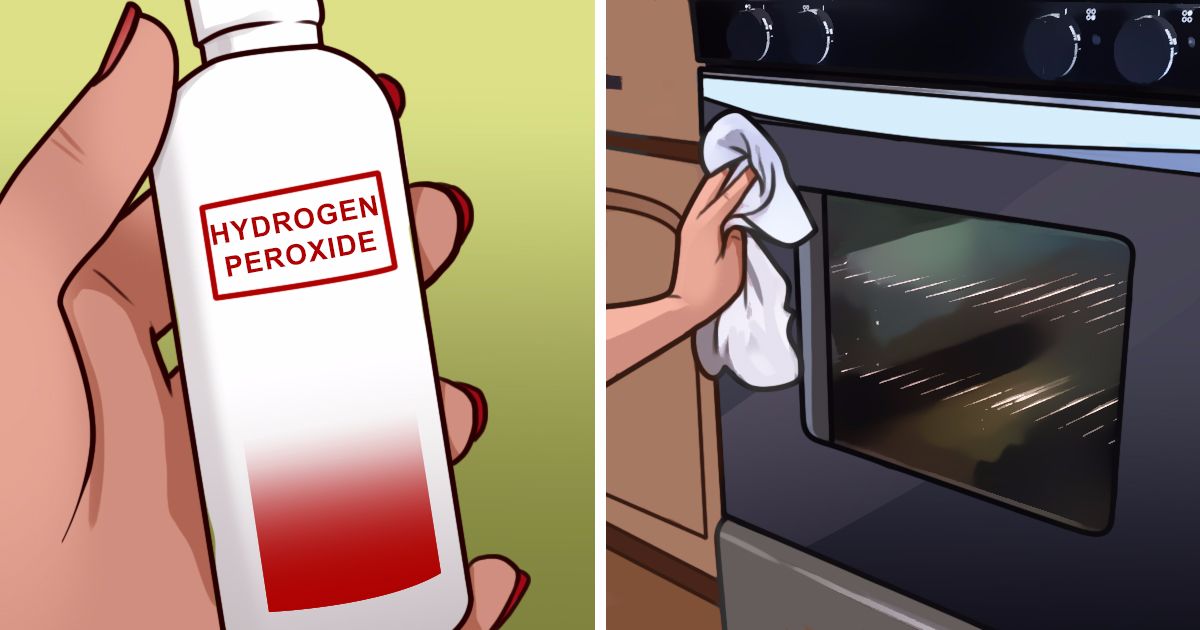
Solve your worst cleaning conundrums—from grubby grout and rusty tools to skunky-smelling clothing—with nothing more than an inexpensive bottle of hydrogen peroxide and these how-to hacks.
As you might remember from chemistry class, hydrogen peroxide is water with an extra oxygen atom, hence the chemical distinction H₂O₂. Though there’s debate about using hydrogen peroxide as a wound disinfectant because it slows healing time, it has potent antibacterial, antiviral, antifungal, and bleaching properties. A 3-percent solution of hydrogen peroxide, which you can buy in drugstores, supermarkets, or online retailers, is strong enough to cut through most organic stains and mild rust. Hydrogen peroxide is less expensive than many commercial cleaners and, better yet, it is a natural disinfectant. Read on to discover dynamite uses for that little brown bottle.
Is hydrogen peroxide safe to use?
Does hydrogen peroxide kill germs? Yes, but it’s super important to take precautions for using hydrogen peroxide safely. While it can be an effective disinfectant and cleaning agent, it can also be hazardous if not handled properly. Here are some dos and don’ts to keep in mind when using hydrogen peroxide:
Do:
- Use the correct concentration for the task at hand. Most household uses call for a 3-percent solution.
- Store it properly. Store hydrogen peroxide in a cool, dark place, away from sunlight and heat sources.
- Rinse the area thoroughly. After using hydrogen peroxide, rinse the surface or item with water to remove any remaining peroxide residue.
- Take safety precautions. Work in a ventilated area, wear gloves and rinse your hands, since hydrogen peroxide can irritate the skin and eyes.
Don’t:
- Mix hydrogen peroxide with bleach. Mixing hydrogen peroxide with bleach can create a toxic gas that is harmful to breathe.
- Mix hydrogen peroxide with vinegar. When combined, hydrogen peroxide and vinegar can create a corrosive acid that can damage surfaces and cause respiratory irritation.
- Ingest it. Hydrogen peroxide should not be ingested, as it can cause serious health problems, including vomiting and severe internal burning, depending on the concentration.
- Use it without testing it first. Hydrogen peroxide can discolor or damage certain materials, such as fabrics, leather, and wood, so be sure to test it on a small, unnoticeable area before using.
Hydrogen Peroxide Uses
Most of us purchase the ubiquitous brown bottles at drugstores, but hydrogen peroxide’s applications extend far beyond the medicinal. You’ll want to keep this antifungal and antibacterial wonder in a caddy with your other housecleaning supplies. Stash a bottle on your potting bench, too, because it’s a handy helper for gardeners.
1. De-gunk tile and grout.

Photo: istockphoto.com
Hydrogen peroxide mixed with sodium carbonate is known as oxygen bleach. Add water, and the compound releases an oxygen molecule to help it lift mold and stains from the surface of natural materials. For a potent homemade grout and tile cleaner, mix ½ cup of baking soda with ¼ cup of hydrogen peroxide in a sealable container. Add a teaspoon of liquid dish soap to the hydrogen peroxide and baking soda mix, close the lid, and shake until fully combined. Wearing protective gloves, apply the mixture to tile and grout, let it sit for at least 5 minutes, then rinse clean with water.
RELATED: How to Use Oxiclean Around the House
2. Freshen up your mattress.

Photo: istockphoto.com
To really rest easy, deep clean your mattresses about every 6 months. Strip the linens and padding, and vacuum the mattress itself. For mattress stains caused by food, drinks, bodily fluids, and even crayons, create a mild solution of one part water to one part hydrogen peroxide. Using a clean, soft toothbrush, work this solution into the stain, let it sit for 5 minutes, and repeat if needed. Once stains have faded, use a hair dryer to dry excess moisture before making the bed.